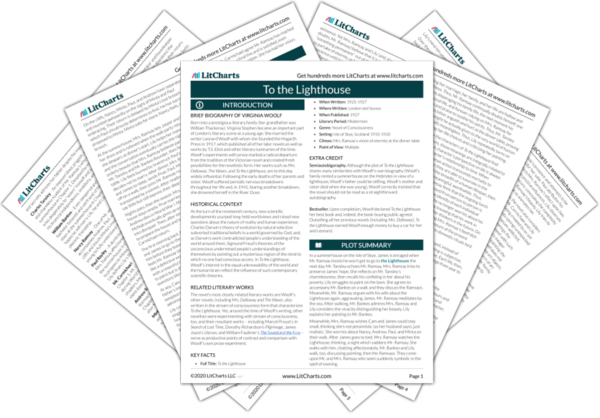Welcome to the LitCharts study guide on Virginia Woolf's To the Lighthouse. Created by the original team behind SparkNotes, LitCharts are the world's best literature guides.
To the Lighthouse: Introduction
To the Lighthouse: Plot Summary
To the Lighthouse: Detailed Summary & Analysis
To the Lighthouse: Themes
To the Lighthouse: Quotes
To the Lighthouse: Characters
To the Lighthouse: Symbols
To the Lighthouse: Literary Devices
To the Lighthouse: Quizzes
To the Lighthouse: Theme Wheel
Brief Biography of Virginia Woolf

Historical Context of To the Lighthouse
Other Books Related to To the Lighthouse
Key Facts about To the Lighthouse
- Full Title: To the Lighthouse
- When Written: 1925-1927
- Where Written: London and Sussex
- When Published: 1927
- Literary Period: Modernism
- Genre: Novel of Consciousness
- Setting: Isle of Skye, Scotland 1910-1920
- Climax: Mrs. Ramsay’s vision of eternity at the dinner table
- Point of View: Multiple
Extra Credit for To the Lighthouse
Semiautobigoraphy. Although the plot of To the Lighthouse shares many similarities with Woolf’s own biography (Woolf’s family rented a summerhouse on the Hebrides in view of a lighthouse, Woolf’s father could be stifling, Woolf’s mother and sister died when she was young), Woolf correctly insisted that the novel should not be read as a straightforward autobiography.
Bestseller. Upon completion, Woolf declared To the Lighthouse her best book and, indeed, the book-buying public agreed. Outselling all her previous novels (including Mrs. Dalloway), To the Lighthouse earned Woolf enough money to buy a car for her and Leonard.







